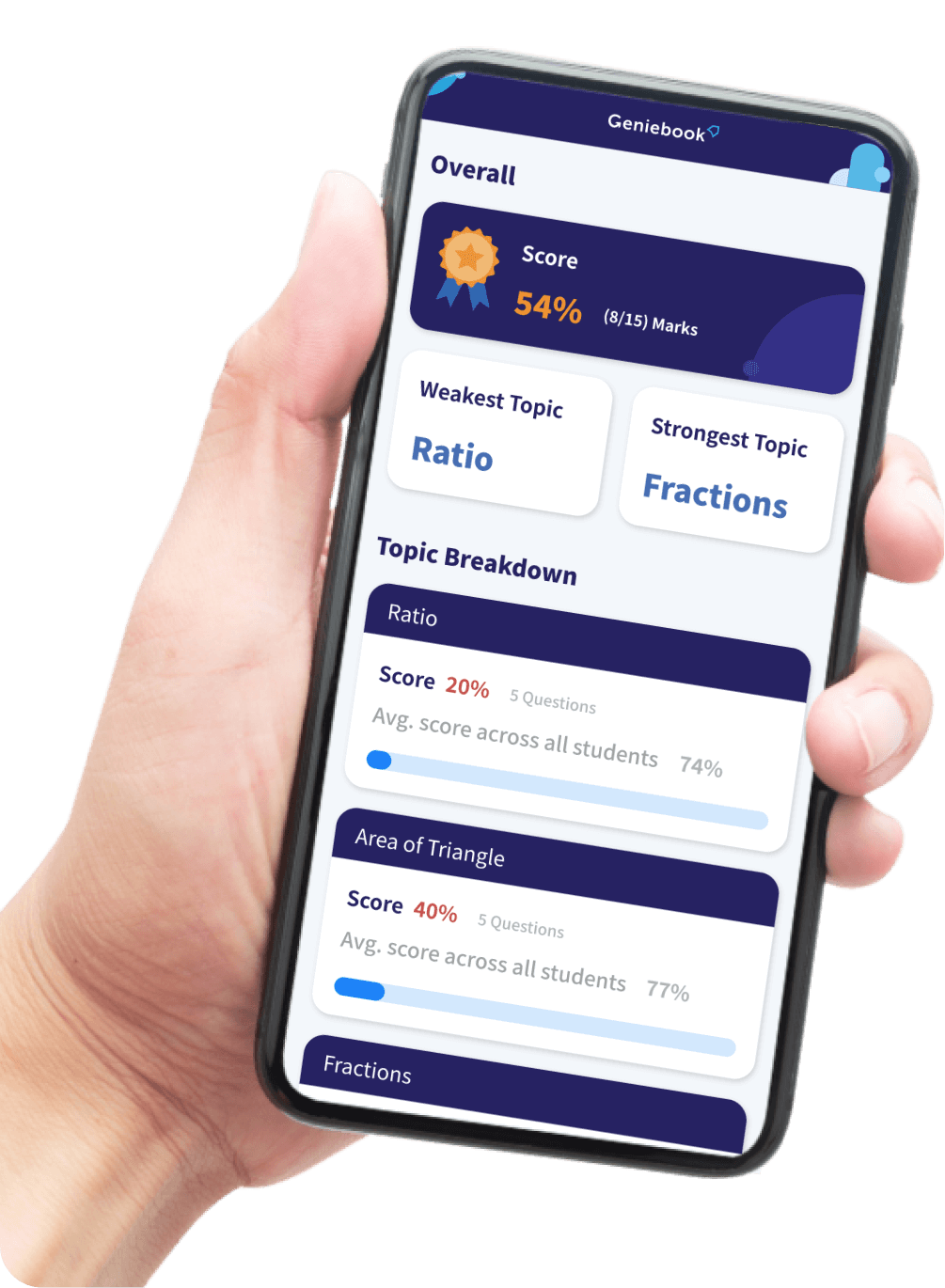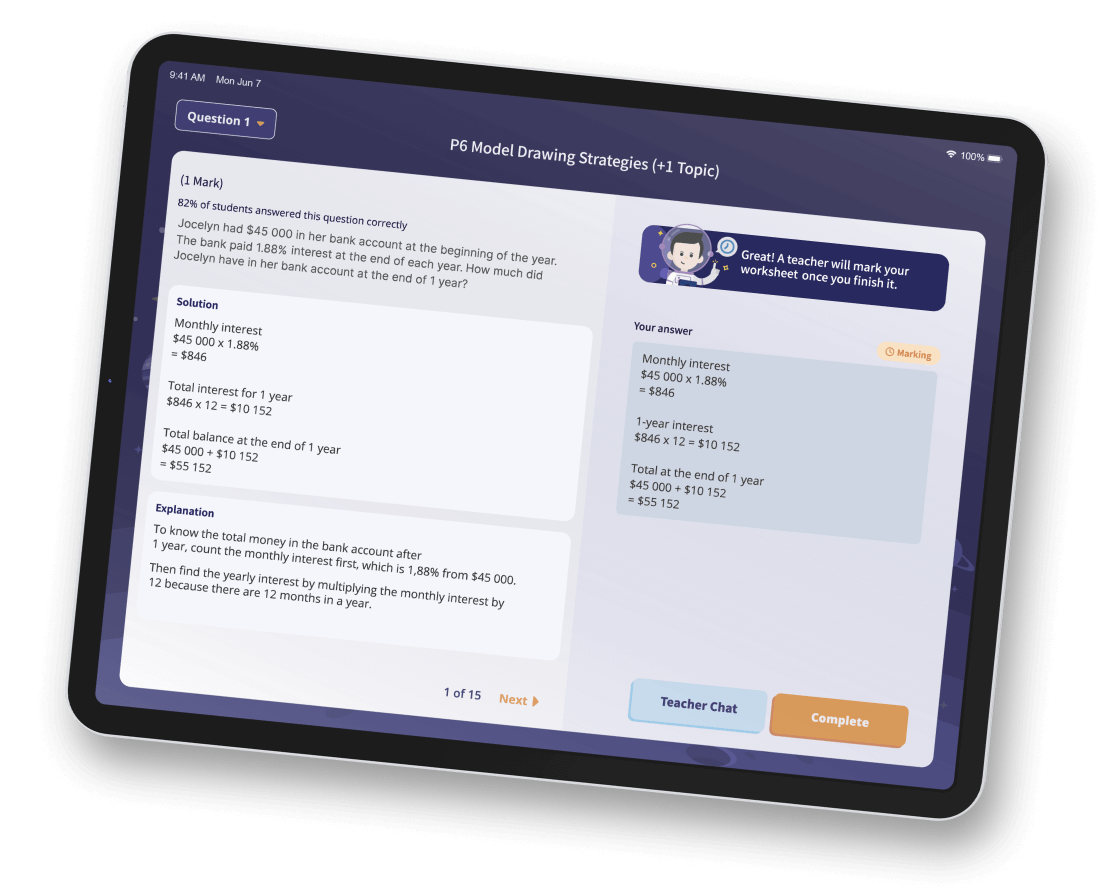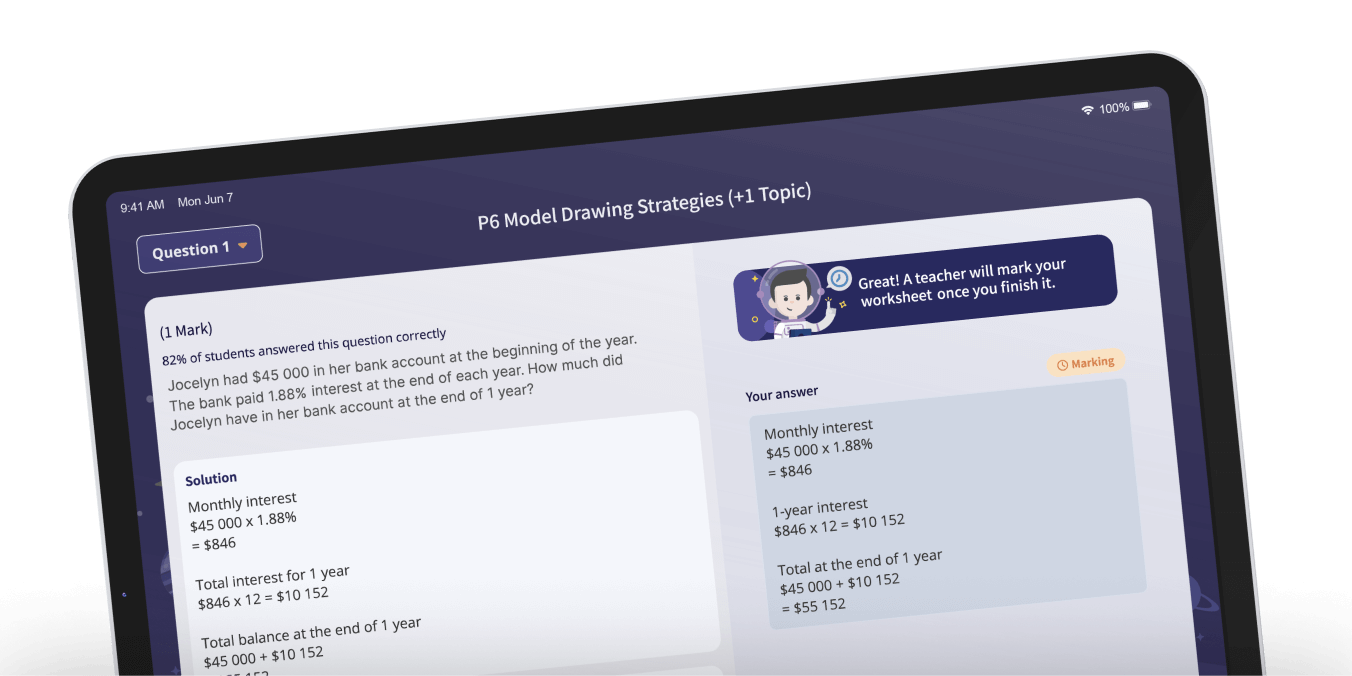Secondary 3 Physics
The secondary 3 Physics Syllabus differs based on one’s chosen subject combination (Pure Physics or Combined Physics). While the difference between the two is not astronomical, the distinction lies in the breadth and depth of each syllabus, as well as the exam format. Generally speaking, students can expect to learn about measurements, the turning effect of forces, light, general wave properties, forces and dynamics, and so on.
Download Exam Papers
Click here for free Seccondary 3 Physics exam papers!
Strategies For Teaching Secondary 3 Physics
Sketch it out
The solution to most physics questions can often be found more quickly with the help of visualisation. As students are often asked to “calculate X given Y”, sketching questions out into diagrams can be helpful. In particular, topics such as vectors and projectiles, kinematics, as well as Newton’s law of Motion and Circular Motion can be more clearly understood with the help of simple sketches and diagrams.
Read interesting physics facts
Our brains are hardwired to detect all things fascinating and strange. From the gravitational pull of our planetary system to the colour-changing power of heat, these mindblowing physics facts might just be the stimulation students need after back-to-back study sessions, or on days they feel less motivated.
How to make learning Secondary 3 Physics fun?
Physics, like mathematics, is often considered one of the tougher subjects that require a good mathematical brain to crack. While the learning curve may be steep, there are actually a variety of ways students can ease the learning process by tilting the scale towards the side of fun. For starters, the internet is chock full of comedies that use the subject of Science as an anchor. Most notably, The Big Bang Theory. Each episode is a half-hour-long science lesson with bitesize physics facts wrapped in layers of lighthearted humour and nerdy jokes. For students who don’t naturally gravitate towards comedy, check out Mythbusters, the popular television series that raised the next generation of curious thinkers who love the more “explosive” side of science.
Common challenges when teaching Secondary 3 Physics
Teaching Secondary 3 Physics at home can pose several challenges for busy parents in Singapore. Firstly, the subject matter becomes more complex, with topics such as electricity and magnetism requiring a deeper understanding of mathematical formulas and models. Secondly, experiments and demonstrations are an important part of learning Physics, but they may be difficult to conduct at home without the proper equipment and resources. Additionally, some specific topics such as Forces and Kinematics can be challenging for parents who may not be familiar with the syllabus. Lastly, time management can be a struggle, as parents must balance their own work responsibilities with overseeing their child's education and progress in Physics.
Frequently Asked Questions (FAQs)
How does Secondary 3 Physics differ from Secondary 2 Science?
The Secondary 3 Physics curriculum is designed to help students develop a deeper and more comprehensive understanding of concepts such as forces, energy, and waves, which were briefly introduced in Secondary 2 Science. One key difference between Secondary 2 Science and Secondary 3 Physics is that in Physics, there is a stronger emphasis on mathematics. Students are expected to use their mathematical skills to solve complex problems related to physics concepts. Overall, Secondary 3 Physics requires a higher level of complexity and depth of understanding compared to Secondary 2 Science.
What are the benefits of learning Secondary 3 Physics?
Taking Secondary 3 Physics is often the springboard that propels students to pursue further studies in the science discipline at the tertiary level, which leads to an exciting career in STEM. For students who enjoy connecting classroom learnings to the day-to-day, the real-world application aspect of the subject is often a huge draw. Also, studying the subject develops students’ critical thinking and problem-solving skills. On top of that, for students who excel in mathematics and dislike memorising large chunks of information, taking Secondary 3 Physics can be an excellent option that plays to their strengths.
What topics are covered in the Upper Secondary Pure Physics syllabus?
The Upper Secondary Pure Physics syllabus covers a total of 20 topics organised into 6 main sections.
Measurements
Physical Quantities, Units and Measurements
Newtonian Mechanics
Kinematics, Dynamics, Turning Effects of Forces, Pressure, Energy
Thermal Physics
Kinetic Particle Model of Matter, Thermal Processes, Thermal Properties of Matter
Waves
General Wave Properties, Electromagnetic Spectrum, Light
Electricity and Magnetism
Static Electricity, Current of Electricity, D.C. Circuits, Practical Electricity, Magnetism, Electromagnetism, Electromagnetic Induction
Radioactivity
Radioactivity
Popular Searches
English | Maths | Science | Editing | Continuous Writing - Expository | Linear Equations | Percentage | Human Digestive System | Model Of Matter - Atoms And Molecules | S1 Exam Test Papers
English | Maths | Science | Expository Writing | Summary Writing | Algebraic Fractions | Direct & Inverse Proportion | Chemical Changes | Acids And Alkalis
Maths | Physics | Chemistry | A-Maths | E-Maths | Further Trigonometry | Polynomials & Cubic Equations | Mass, Weight & Density | Light - Reflection | Kinetic Particle Theory | Periodic Table | S3 Exam Test Papers
Maths | Physics | Chemistry | A-Maths | E-Maths | Matrices | Statistical Data Analysis | Integration Techniques | Magnetism | S4 Exam Test Papers
Primary 1 | P1 Maths | P1 English | Primary 2 | P2 Maths | P2 English | Primary 3 | P3 Maths | P3 English | P3 Science | Primary 4 | P4 Maths | P4 English | P4 Science | Primary 5 | P5 Maths | P5 English | P5 Science | Primary 6 | P6 Maths | P6 English | P6 Science


 SG
SG  VN
VN 












